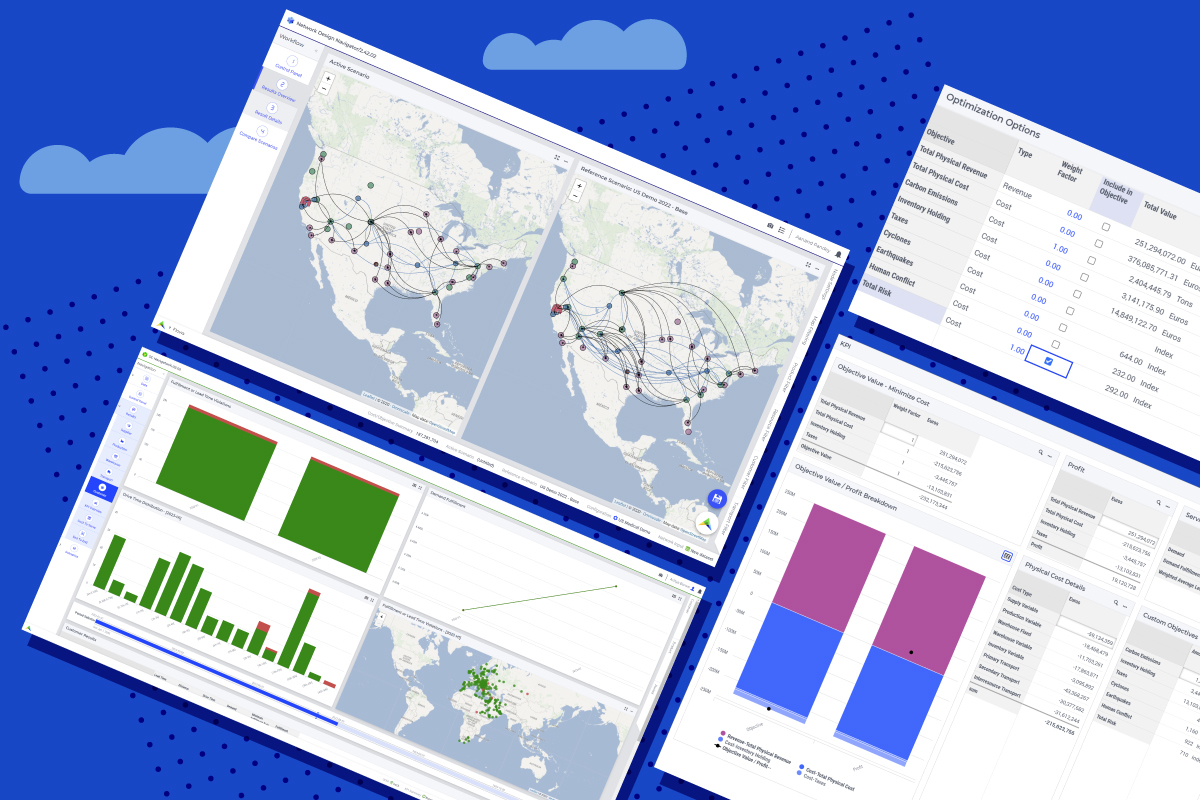Supply Chain Network Design to Support Long Term Growth at La-Z-Boy
About La-Z-Boy
La-Z-Boy is one of those iconic brands that everyone in the US is familiar with. It sparks an instant image of comfort and relaxation, best illustrated when Joey and Chandler from Friends memorably lean back in their leather recliners and simultaneously say ahhhhh. This global leader in residential furniture has been in business for over 94 years, making furniture for every room in the home. It also happens to own Joybird, a hot e-commerce company that sells customizable furniture to mid-century modern fans.

I had the pleasure of speaking with Chris Furlong, VP of Strategy & Transformation, who has been driving cross-company transformation initiatives at La-Z-Boy and has been using AIMMS Network Design to inform some of those initiatives.
Chris, can you tell me a little about your role at La-Z-Boy?
 I have been with La-Z-Boy for a little over eight years. Most of that time, I was in a VP of Supply Chain role. We started a supply chain transformation in 2012 and I was responsible for three of the five major initiatives under that banner. Those initiatives were:
I have been with La-Z-Boy for a little over eight years. Most of that time, I was in a VP of Supply Chain role. We started a supply chain transformation in 2012 and I was responsible for three of the five major initiatives under that banner. Those initiatives were:
- centralizing our procurement function
- building a best-in-class S&OP process
- upgrading our global sourcing capabilities
I spent four years in Hong Kong building up our global sourcing capabilities in Asia. When I came back in 2019, I stepped out of my line role and I began focusing on strategic supply chain-related initiatives, and that is how I got involved with AIMMS.
One of the things on our agenda was to develop a long-term plan for North America’s supply chain. The first initiative we tackled was getting a long-term plan and vision in place for the manufacturing network that supports the North American business, which is the lion’s share of La-Z-Boy’s business.
Recently, I was asked to lead our Strategy group.
1. What led to your decision to get network design software? Why was this the right time?
Before the pandemic, we had some ideas on how to drive some significant structural costs out of the business through the manufacturing network. We saw an opportunity to look at our network in a more holistic way and design an optimal network for the US.
Obviously, things changed significantly during the pandemic. Furniture category sales are very robust and lead times are longer due to the jump in demand. It became even more urgent to optimize our network.
2. What was the biggest challenge of the past year from a supply chain perspective?
Due to the increased demand for our products, one of our biggest supply chain challenges was ramping capacity by expanding production at existing plants and opening new manufacturing plants. We also had to expand our workforce and quickly teach new employees how to make upholstered furniture, while keeping input materials flowing – leather, fabric, foam, wood – to be able to keep plants running.
3. What was your process and criteria for network design software selection?
About a year ago I began work on optimizing our network design to improve our cost base in the US. I had a view of demand five years out with some reasonable growth projections. Of course, those projections were before we had a huge spike in demand.
I had done this type of work before as a consultant and I anticipated that this was something we would be doing on a more regular basis. So, I was looking for a commercially available tool that did not involve a huge price tag. I talked to Gartner, who provided some suggestions on the main vendors in the supply chain network optimization space. As we reviewed them, either they were cost prohibitive or the platform wasn’t robust enough for our needs.
Consultants that we work with in this space indicated that AIMMS is probably #2 in the market and was easy to work with. AIMMS put together a reasonable offer and I think it’s worked out well.
4. How has your AIMMS Network Design software experience been?
Overall, I think it has been very positive. The tool is easy to use. The online training and examples shared have been useful. I’ve had lots of great support. Your onboarding team was very involved and responsive.
Given that the decisions to be made would have a considerable impact, we had to carefully consider our options. The ability to model the base case and run scenarios was very helpful.
There was an executive steering committee that began at the start of the initiative to outline objectives and provide feedback. I met with them regularly for check-ins and to get input. I also got feedback from my peers in manufacturing during the project. I had a working model very quickly that I continued to expand. Insights from the model and the related recommendations were presented and discussed with the steering committee. It was very satisfying to know we looked at all the relevant options and used a robust, analytical approach.
5. What changes have you made as a result of the insights? Can you share anything about how this impacted your operations?
We now have a model that looks at our manufacturing capacity and supply chain network more holistically. The modeling we did helped us design a more optimal network for the US.
We are a make-to-order business for the most part. So, we have a fixed capacity to forward the schedule and we have the next available slot when a customer order comes in. If demand surpasses capacity, the lead times just get longer and longer. In response to that, we have been building capacity by maximizing our US plants and building capacity in Mexico.
The work that I did, even though that was not the intent originally, is guiding many of those decisions to ensure that they are consistent with the long-term plan.
6. How has this changed decision-making?
When ideas are considered that would impact the supply chain network, we run it through the software to gauge the impact and to better understand the tradeoffs.
We have increased our capability to do strategic network planning in a more robust, analytical way. In general, the leadership group knows we have a well-thought-out plan with a solid approach. If we want to make changes, we can model them and assess the impact from a cost and service perspective on the whole network.
7. How does the model help with agility and risk management?
With an overall supply chain framework, it is easier to make decisions. As things come up, we can model them, identify the best course of action, and move pretty quickly which helps make us more agile.
In terms of managing risk, labor is probably our biggest risk area right now and the model helps guide how much capacity to put where, depending on regional labor projections and market shifts.
8. Are you considering other use cases in the near future?
The software will help us answer other questions. For example, we may look at sources of supply from Southeast Asia in the context of this model. Also, there is an opportunity to take a similar approach in terms of supply chain design with our international business. Finally, we will likely assess if we can use our North American capacity to fuel growth overseas in the future.
9. What skills do you think future supply chain leaders need?
The ability to discern what capabilities and technologies are going to be most impactful and add value. There is a lot of noise out there in terms of technology in the supply chain space. Some of those most likely involve significant time and resource investment but with limited benefit. The next group of leaders needs to be very tech-savvy to navigate the landscape.





